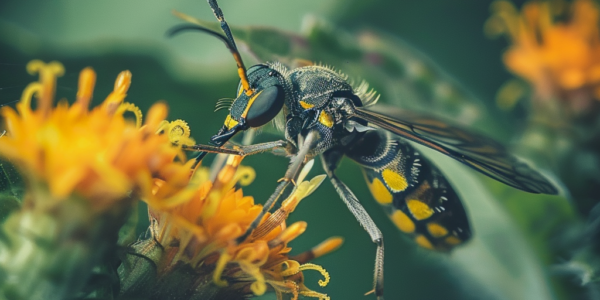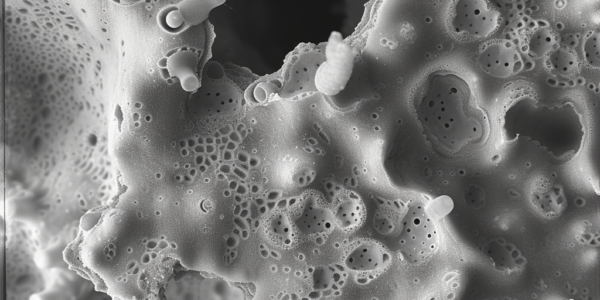Promoting Sustainability in the Tech Industry
Learn how the tech industry is making efforts to reduce its environmental impact and promote sustainability. Discover the importance of distinguishing genuine eco-friendly practices from greenwashing in technology. Find out how to be a sustainable tech user by purchasing refurbished phones, recycling old devices, and supporting brands committed to positive change. Explore Fairphone, a leading sustainable smartphone brand known for its use of recycled materials, ethical sourcing, and repairable design. Join the movement towards a greener future by adopting sustainable tech practices and promoting environmental responsibility.
UMass Amherst Researchers Use AI to Eavesdrop on Insects for Environmental Health Assessment
UMass Amherst researchers are leveraging machine learning to eavesdrop on the insect world, aiming to enhance environmental health assessment. By identifying different insect species through their sounds, researchers hope to gain insights into the shifting populations of insects, which can provide valuable information about the overall health of the environment. The study, recently published in the Journal of Applied Ecology, highlights the increasing significance of machine and deep learning in automated bioacoustics modeling. Laura Figueroa, assistant professor of environmental conservation at UMass Amherst and the senior author of the paper, emphasizes the crucial role of insects in ecosystems and the challenges in monitoring their populations. With the rise of environmental stressors and drastic changes in insect populations, traditional sampling methods are proving to be insufficient. The collaboration between ecologists and machine-learning experts is seen as a promising approach to fully unlock the potential of AI in identifying and monitoring insect populations. The potential of AI in environmental health assessment is evident, offering a non-invasive and efficient alternative to traditional entomological methods. As Figueroa points out, the ability to differentiate insect sounds and train AI models to identify species based on their unique sounds opens up new possibilities for understanding and safeguarding insect populations in the face of environmental challenges.
Study Finds Multiple Child Asthma Triggers in Polluted Air
New research from Washington State University in Spokane reveals that polluted air contains a toxic mix of chemicals that can trigger asthma attacks in children. The study, led by researcher Solmaz Amiri, found that the location of a child’s residence significantly impacts their exposure to these toxins. Three pollutants were identified as particularly influential in triggering asthma symptoms in children: 1,1,1 trichloroethane, 2-nitropropane, and 2,4,6 trichlorophenol. Despite some of these air toxics being discontinued in the U.S., they may still be present in stored materials or the environment. The study highlights the ongoing presence of these pollutants and their potential impact on children’s health, underscoring the need for continued monitoring and action to reduce children’s exposure to harmful air pollutants.
The Environmental Impact of AI and Datacentres
The exponential growth of AI and digital technology has revealed the significant environmental impact of datacentres, which consume substantial amounts of electricity and water. Kate Crawford’s Atlas of AI and the Anatomy of an AI System graphic have highlighted the environmental implications of these facilities. With datacentres consuming 18% of Ireland’s electricity and matching the energy consumption of urban dwellings, urgent legislative action is needed to address their environmental footprint.
Citizen Scientists Join Researchers in Groundbreaking Global DNA Collection Project
The LeDNA project is set to create the largest collection of environmental DNA (eDNA) ever gathered from aquatic environments in a single day, providing a comprehensive snapshot of global biodiversity. Citizen scientists are teaming up with researchers to collect DNA samples from hundreds of lakes across the globe, with over 500 individuals from 101 countries participating in the initiative. Environmental DNA has been instrumental in detecting endangered species and is considered a valuable asset for biodiversity monitoring, although researchers acknowledge its limitations.
Industrial Pollutants Found in Mediterranean Corals for the First Time
Scientists at University College London have discovered industrial pollutants embedded in Mediterranean corals for the first time, offering a potential new tool to track the history of pollution. The finding marks a historical marker of the proposed Anthropocene epoch, highlighting the extensive impact of human activity on the environment. This groundbreaking research sheds light on the impact of industrial pollutants on marine ecosystems and provides valuable insights into the long-term effects of fossil fuel combustion.
Dangerous Climate Tipping Points Will Affect Australia
Learn about the potential impacts of global climate tipping points on Australia and the irreversible changes that could occur. Cutting fossil greenhouse gas emissions is crucial to limit warming and reduce the risk of triggering tipping points.
Spider Webs as Traps for Environmental DNA
Spider webs, often associated with catching flies, have been found to be a useful trap for environmental DNA, offering a potential breakthrough for environmental scientists. The discovery that spider webs can capture fragments of skin, hair cells, or body fluids…
UConn Researchers Explore CO2 Removal for a Healthier Environment
UConn researchers are exploring CO2 removal as a way to foster a healthier environment. As efforts to address the effects of a warming planet ramp up, C02 removal is at the forefront of sustainability. But what happens to that carbon…
Human Evolution and Climate Crisis
Human evolution might be the biggest threat to solving the climate crisis, according to a new study from the University of Maine. The research aimed to understand how the process of cultural adaptation to the environment, a significant driver of…










